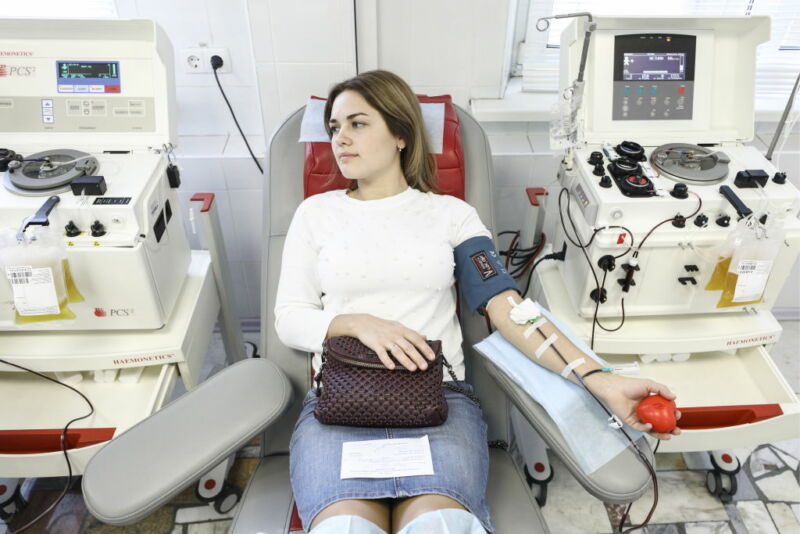
Enlarge / The machine at right can separate out blood plasma and simultaneously return red blood cells to the donor. (credit: Mikhail Tereshchenko/Getty Images)
Back in our exhaustive review of potential treatments for SARS-CoV-2 infections, we mentioned one option that was relatively quick, easy, and required no further approval for use: transfer of blood plasma from those who had previously had an infection. The reasoning being that this plasma will contain antibodies that could neutralize coronaviruses in the blood stream, severely limiting the progression of an active infection. Now, trials of this method are starting in New York City, the hardest hit location in the US.
We'll quote our earlier coverage of this potential therapy, which explains why it might be a quick route to a treatment, albeit with limitations:
Spike is a complicated protein that provides a wealth of targets for potential therapies. As the most prominent feature of the virus' exterior, spike is the main target of antibodies against the virus produced by the immune system. This has already led to one option for therapies: purifying plasma from people who have fought off a coronavirus infection, on the assumption that the plasma contains antibodies that can neutralize the virus. This plasma can then be infused into sick people, where the antibodies should help the immune system clear the virus. While it's only a temporary fix—antibodies don't survive indefinitely in the blood stream—it may give a patient's immune system sufficient time to develop its own antibodies.
There are unknowns about whether infected individuals produce effective antibodies. But the big issue here is scaling, as plasma treatment relies on having enough healthy, formerly infected individuals who are willing to donate blood plasma. If used strategically—on the most at-risk patients, or to help infected health care professionals—it could be a helpful tool but isn't likely an effective general therapy.
There have been some anecdotal reports of the approach being used by countries like China, which were hit hard early in the pandemic; one published today indicated that plasma treatment improved the condition of five critically ill patients. But no detailed studies of its effectiveness have been reported so far (at least to our ability to determine). That may now be about to change, according to the New York Times.
No comments:
Post a Comment